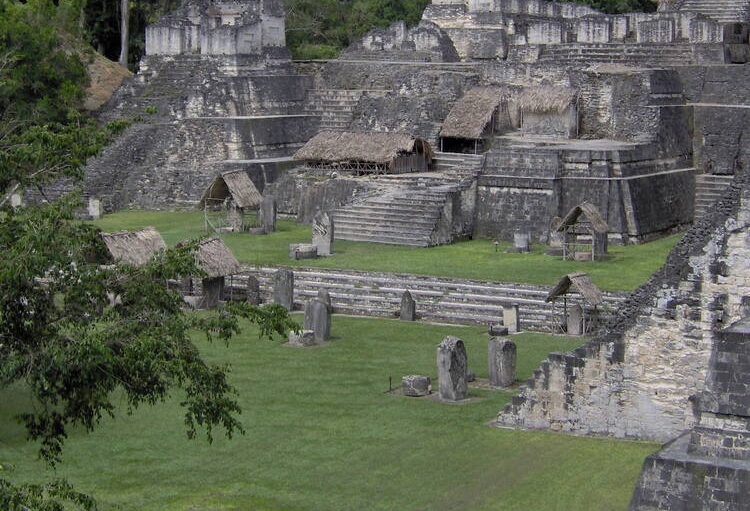



Tikal National Park – remains of a major center of Mayan civilization, UNESCO World Heritage site

Baku, September 29, AZERTAC
In the heart of the jungle, surrounded by lush vegetation, lies Tikal National Park - one of the major sites of Mayan civilization, inhabited from the 6th century B.C. to the 10th century A.D.
The park is located in Northern Guatemala's Petén Province within a large forest region often referred to as the Maya Forest, which extends into neighbouring Mexico and Belize.
Tikal National Park encompasses 575 square kilometres of jungle and thousands of ruined structures.
The central part of the ancient city alone contains 3,000 buildings and covers about 16 square kilometers.
Tikal is also part of the one-million-hectare Maya Biosphere Reserve created in 1990 to protect the dense forests of the Peten, which started to disappear at an alarming rate due to population pressures, illegal logging and slash-and-burn agricultural practices.
Archeologists estimate that the Maya settled in the area now known as Tikal in about 900 BC.
Tikal grew into an important ceremonial, cultural, and commercial center over the centuries. Most of the city's huge temples were constructed during the eighth century AD when Tikal became the greatest city in the Maya world with a population of perhaps 100,000.
Like Maya complexes on Mexico's Yucatan Peninsula, Tikal fell into decline at the end of the ninth century and was virtually abandoned. The causes of the Maya empire's collapse remain a mystery, but wars, famine, overpopulation and resource depletion have all been blamed.
Tikal's great stone monuments languished for centuries and were gradually reclaimed by the jungle.
Hernan Cortes, the conqueror of Mexico, and his motley band of conquistadors marched by Tikal in 1525, but they failed to see its temples concealed by 40-metre-tall silk, cotton, cedar and mahogany trees.
Spanish friars later wrote of a great city hidden in the forests of the Peten. It wasn't until 1848 that an expedition sent out by the Guatemalan government officially discovered the ruins. Swiss, German and British archeologists soon followed to clear debris and begin studying the site.
Temple I rises some 50 meters above the plaza's eastern end. A stone stairway leads up the pyramid's nine tiers, corresponding to the nine levels of the Mayan underworld. Tourists have fallen to their deaths from these vertiginous steps, prompting park authorities to recently ban climbing.
In 1958, archeologists discovered the tomb of Ah Cacau (Lord Chocolate), one of Tikal's greatest rulers, inside Temple I. Ah Cacau's skeleton was festooned with jade ornaments and surrounded by precious offerings, including pottery, alabaster, sea shells and pearls from the Caribbean coast. You can see a replica of this elaborate tomb in the Tikal Museum near the visitors' centre.
Temple I has yielded other treasures, including intricately carved wooden lintels over its doors, which have furnished clues to Maya beliefs and cosmology.
Tikal was declared a national monument in 1931 and a national park in 1955, one of Guatemala's first protected areas. Two years later, the boundaries and regulations were refined.
More recently, in 1990, the vast Maya Forest Biosphere Reserve was recognized by UNESCO with the property being one of several core zones.
Azerbaijan's Minister of Culture holds meeting with his UAE counterpart in Venice
Azerbaijani pavilion launched at 60th Venice Biennale VIDEO
Azerbaijan`s pavilion to showcase at 60th Venice Biennale